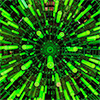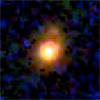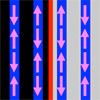Oct 11, 2024 (Nanowerk Spotlight) The world’s generation of electronic waste is rising at an alarming pace. In 2022 alone, 62 million tonnes of e-waste were produced globally, according to the United Nations' 2024 Global E-waste Monitor report. To put that into perspective, the sheer volume of discarded electronics would...
Core-shell nanoparticles as game changer for high-resolution and ultrafast scintillator imaging
Oct 11, 2024 (Nanowerk News) Scintillators are detectors that make high-energy X-rays or particles visible through flashes of light to form an image. Their many applications include particle physics, medical imaging, X-ray security and more. Despite their usefulness, however, scintillators have presented researchers with a conundrum. Until recently, scientists had...
Engineering perovskite materials at the atomic level paves way for new lasers, LEDs
Oct 11, 2024 (Nanowerk News) Researchers have developed and demonstrated a technique that allows them to engineer a class of materials called layered hybrid perovskites (LHPs) down to the atomic level, which dictates precisely how the materials convert electrical charge into light. The technique opens the door to engineering materials...
A new method makes high-resolution imaging more accessible
Oct 11, 2024 (Nanowerk News) A classical way to image nanoscale structures in cells is with high-powered, expensive super-resolution microscopes. As an alternative, MIT researchers have developed a way to expand tissue before imaging it — a technique that allows them to achieve nanoscale resolution with a conventional light microscope....
‘Inside-out’ galaxy growth observed in the early universe
Oct 11, 2024 (Nanowerk News) Astronomers have used the NASA/ESA James Webb Space Telescope (JWST) to observe the ‘inside-out’ growth of a galaxy in the early universe, only 700 million years after the Big Bang. This galaxy is one hundred times smaller than the Milky Way, but is surprisingly mature...
Asymmetric catalysis with DNA hybrid catalysts
Oct 11, 2024 (Nanowerk News) Chemists from the National University of Singapore (NUS) have developed a way to make diverse chiral deoxyribonucleic acid (DNA) catalysts by merging DNA repair with biorthogonal chemistry, paving the way for more efficient and versatile approaches to asymmetric catalysis. Enzyme catalysis, which uses biological proteins...
Illuminating quantum magnets: light unveils magnetic domains
Oct 11, 2024 (Nanowerk News) When something draws us in like a magnet, we take a closer look. When magnets draw in physicists, they take a quantum look. Scientists from Osaka Metropolitan University and the University of Tokyo have successfully used light to visualize tiny magnetic regions, known as magnetic...
Ordered defects may be key for solution-deposited semiconductors
Oct 10, 2024 (Nanowerk News) Standard manufacturing techniques for semiconductor devices – the technologies that make electronics possible – involve processing raw materials at high temperatures in vacuum vessels. This fundamentally limits manufacturing efficiency and scalability. Processes based on deposition from chemical solutions at lower temperatures and ambient pressure have...
Motion-amplified piezo actuators and grippers provide precision, speed, and force
Oct 10, 2024 (Nanowerk News) The piezoelectric effect directly converts electrical energy into mechanical motion. PI uses this effect for high precision, solid-state based actuators and grippers. Embedding a piezoceramic stack in a flexure-based arrangement can increase the motion range of the piezo actuator while providing protection, precision guidance, and...
Faster, more sensitive lung cancer detection from a blood draw
Oct 10, 2024 (Nanowerk News) A new way of diagnosing lung cancer with a blood draw is 10 times faster and 14 times more sensitive than earlier methods, according to University of Michigan researchers. The microchip developed at U-M captures exosomes—tiny packages released by cells—from blood plasma to identify signs...










